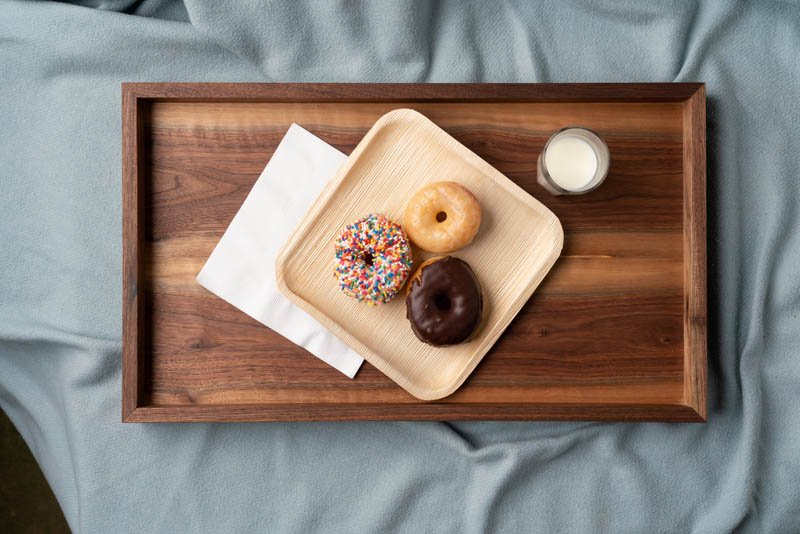How to Incorporate Wooden Furniture in Your Living Room
For generations, homeowners have strived to bring nature inside their homes.
After all, the natural, organic appeal of wooden furniture can make a room feel warm and inviting. Whether we’re talking about wooden tables, chairs, or shelves, the furniture made out of this material can deliver the warm indulgence no other elements can.
However, when it comes to infusing wooden furniture into home interiors, things are a bit different than they were decades ago. Gone are the days of matching wood furniture sets.
Nowadays, homeowners tend to mix various wood finishes to achieve a more layered look. Allowing different kinds of wooden furniture to coexist provides a feel that’s not only more organic but also more modern and international.
Here are a couple of simple ideas that will help you successfully incorporate wooden furniture into your living room:
Start with An Anchor Piece
As your starting point, use a larger piece of wooden furniture to create an impact. A buffet or a coffee table works best in this regard.
Whichever type of wooden furniture you ultimately go with, it will be your centerpiece - something you will design the rest of the room around.
A good idea would be to mix two or three contrasting wood tones around your anchor piece. Keep in mind that you can always experiment by adding various wood accessories to create a look that suits your taste.

Contrast Furniture and Flooring
When furniture and flooring are of the same color, furniture doesn’t look as striking - it gets lost against the backdrop.
The solution to this problem is quite simple - you have to pair darker flooring with light furniture, or vice versa. This breaks up the monotony and gives your statement wooden furniture the decor role it deserves.
So, in case you have a light-toned floor, consider adding darker furnishings. If your flooring has a darker stain, you could, for example, use a light-toned credenza as your living room’s anchor piece.

Pick a Dominant Wood Tone
As we said, the current trend of infusing wooden furniture into living rooms is based on mixing different wood tones.
However, that doesn’t mean you have to follow this unwritten rule, particularly if you’re feeling out of your element. Although they’re mostly a thing of the past, matching wood furniture sets are still in demand.
Or, you could simply purchase different wooden furnishings of the same color. For example, pick walnut brown as your dominant wood tone by getting seating and a shelving unit of the same color. Dark-painted wood pieces such as these stand out when they’re set against neutral, gray wash walls.
Create a Harmonious Balance
If you, however, don’t want your living room to look lopsided, you’ll have to balance out different wood finishes.
Here’s an example: a combination of dark-stained floor, whitewashed couches and armchairs, and colorful wood accessories. Creating a harmonious balance of different tones and elements throughout your space can work wonders.
The kind of wood - mango, rosewood, teak, or mahogany - doesn’t really matter as long as you know how to achieve an equilibrium.

Create Continuity with Accent Color
Those worrying that they’ll unintentionally mismatch different wood tones will be pleased that there’s an uncomplicated solution to this issue.
It’s as simple as using accent color to tie the different styles and finishes together. Even the smallest soft-colored elements can be of great help here.
Another solution would be to choose a “bridge” wood. Unique woods, such as spalted sugarberry and reclaimed timber can act as a sort of bridge between darker and lighter wood tones in your living room.

Embrace Natural Shapes
Minimalism and straight lines are great, but they’re not something all homeowners are looking for.
Live-edge furniture brings nature indoors and gives the living room a sort of rustic appeal. The unique curves, knots, and grains of live-edge tables have a natural beauty that can’t be replicated.
This one-of-a-kind design means that live-edge furnishings often act as pieces of artwork, too. In other words, you won’t be introducing just nature into your home, but also a piece of true art.
Don’t Forget the Deck
A lot of modern living rooms have floor-to-ceiling windows facing the deck. If your wooden flooring or wooden furniture are of a different color than that of your deck, you’ll have a continuity problem.
Fortunately, all it takes to solve this problem is quality deck paint and a bit of good old elbow grease. Simply paint your deck to a color that matches the interior of your living room.
By doing this, you won’t only solve the continuity issue, but also make your living room appear larger.
By incorporating wooden furniture into your home decor, your living room (or any other room, for that matter) is bound to feel warm and cozy. Hopefully, the tips listed above will help you get the natural look you’ve always wanted.
Guest Post: Kevin has gone through an extensive home renovation with his son, which he has both thoroughly enjoyed, and dreaded every morning. He is now the proud owner of half his dream house (the other half has been waiting for spring). You can read more of Kevin’s work on PlainHelp.



